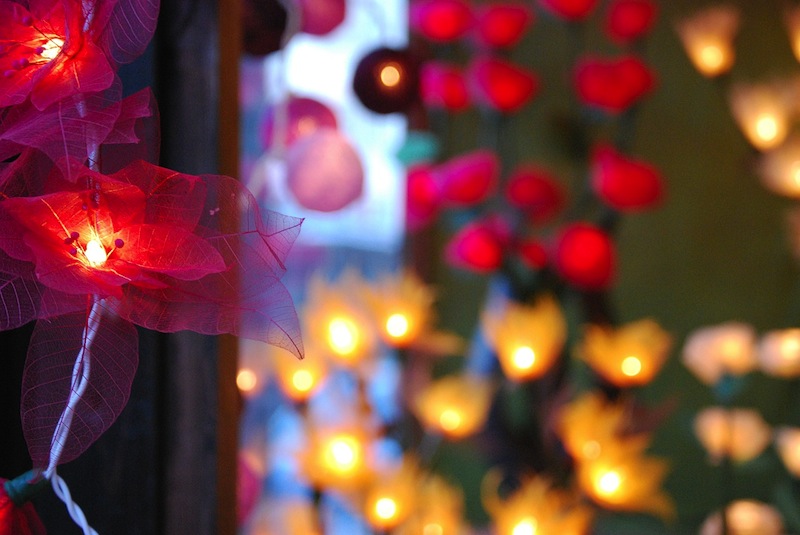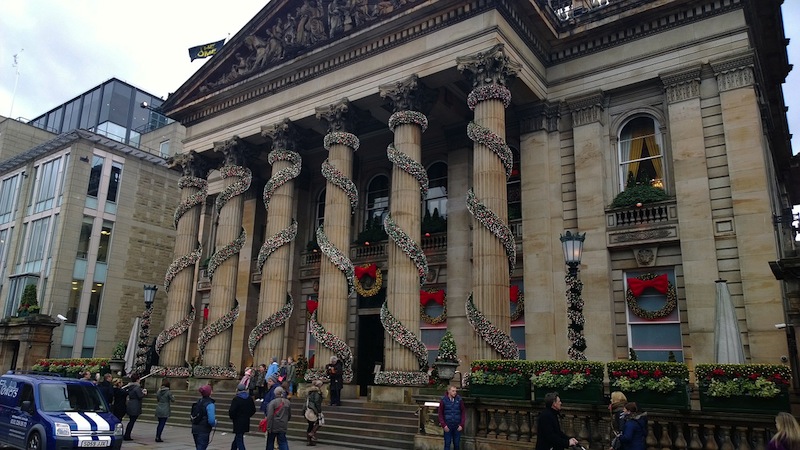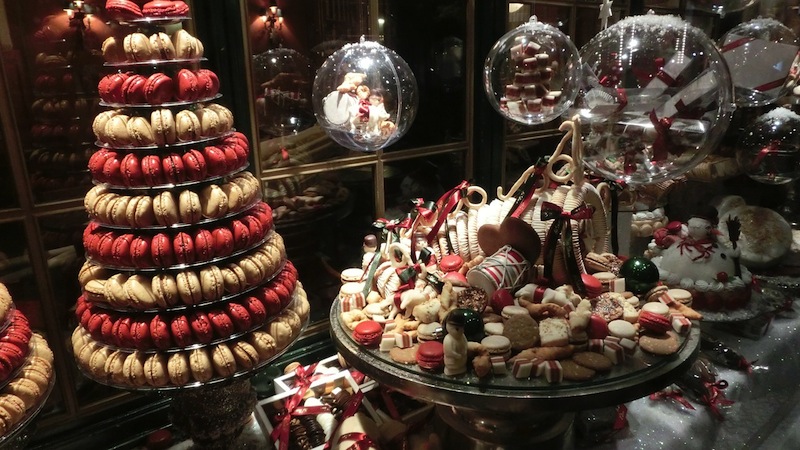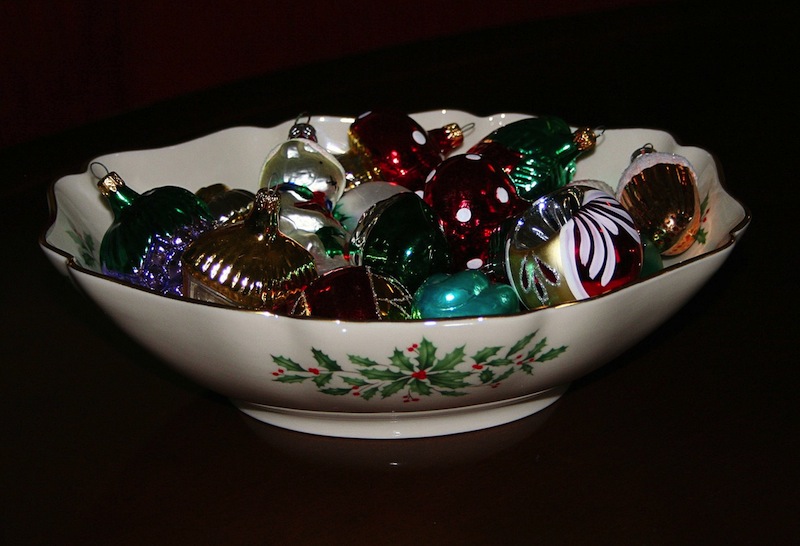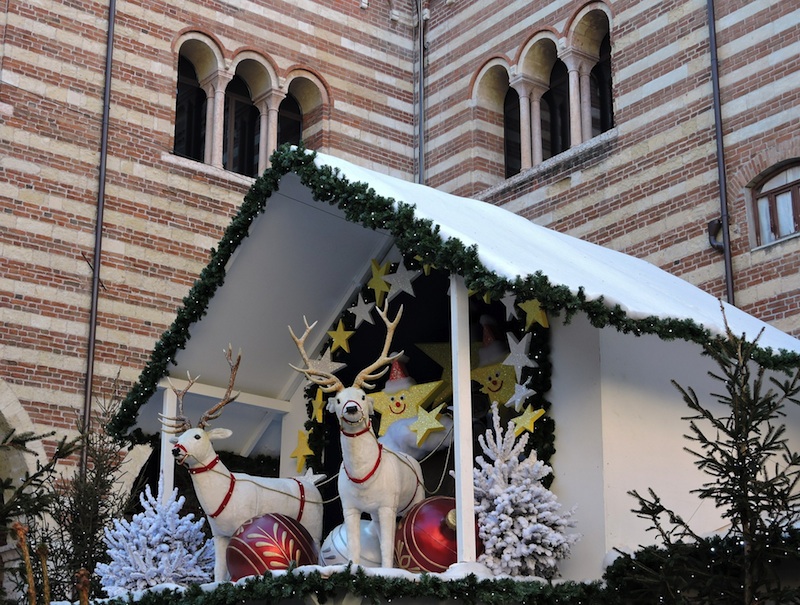
We thank Italian Elisabetta for this detailed account of Christmas traditions in Italy.
One of the most important events linked to Chrismas time in Italy is the preparation of the crib, which is termed presepe in my country. According to the tradition, the first crib would date back to the time of Saint Francis of Assisi.
The oldest crib that has been carefully preserved over time was sculpted in 1250 by Arnolfo di Cambio. It now belongs to the collections of Santa-Maria-Maggiore’s Basilica in Rome (Italy), where it is exposed. This tradition spread out during the XVIIth and XVIIIth centuries, reaching towns such as Rome, Naples, Genoa, as well as Sicily. Nobles in Rome would prepare sumptuous cribs that were opened to the public during Christmas celebrations.
Another tradition in the city of Rome is the coming of musette players (musette is a music instrument that closely looks alike bagpipes). The Italian name “zampognaro” designates the music instrument. Today it also refers to the tradition.
Musette players come from Abruzzo, an Italian region close to the Lazio where is located Rome. Today the players still get dressed like shepherds in Abruzzo ages ago, with picturesque, colorful clothes. In the XVIIth and XVIIIth centuries, musette players coming from Abruzzo were the only ones allowed to play their instrument during Christmas celebrations.
Another tradition that is typical of the city of Rome is the opening of the Christmas Market along Navona’s Square. Indeed, along what may be considered as the most beautiful place in Rome – which may actually also be the most wonderful place in the world – people may get toys and games for their kids, delicacies such as goodies and candies, and above all, small figurines for their crib. There is great demand for these famous, exquisite figurines. Last but not least, people may also get all sorts of Christmas decorations and ornaments.
On 6 January the Christmas Market closes. On this very day la Befana will visit children in Rome, while French people will celebrate the arrival of the Three Wise Men (la fête des Rois in French). Since not all of you are aware of Christian customs, Twelfth Night, also known as Epiphenia, corresponds to the arrival of the Tree Wise Men (or Maggi).
Although she travels on her broomstick, la Befana who is famous only in Rome, is not a witch. She is rather a very bad-tempered woman who is also very, very old.
(According to the legend, on their way to Bethlehem, the Three Wise Men visited la Befana. They explained her that the birth of the Holy infant would occur pretty soon and invited her to join them, but la Befana was brooming her house when they came in… She answered she was too busy to go with them! Since that time she visit children each year on 6 January, desperately looking for the Holy infant [translator’s note]).
Anyway, in Rome people have great respect for this tradition. For at least two centuries, la Befana brought along candies and toys to children who well behaved during the year, and charcoal to those who badly behaved.
However, as time elapsed traditions changed, including more and more traditions from other countries; This means that children in Rome will now receive two series of gifts: the first one is brought along by Santa Claus on 25 December, and the second one is brought along by la Befana on 6 January.
Regarding the religious aspects of Christmas time, though it is a quite recent tradition, Italian people will attend the midnight mass. The ability to attend the midnight mass in Saint Peter’s Cathedral in Rome is one the most significant act in Christianity.
Now, let’s speak of the joy of cooking during Christmas time. According to the oldest traditions, on Christmas Eve (24 December), Italian people will first have meal without meat. It is called “di magro”. The best recipes are kept for the following day, i.e., the Christmas Day meal (on 25 December).
However, this is only in Naples that people will eat capitone (a big eel) because the tradition is still vivid. In the remaining parts of Italy, the tradition did not continue, which means that each county has its own recipes. Therefore, you may imagine that describing all of them would be time-consuming.
Let’s just mention that lamb and turkey are the most common dishes, although they might be cooked in different ways, depending on the various Italian regions.
As regards dessert, today the official one is either panettone or pandoro bread in the northern part of Italy.
Nougat with almond flavor that comes along with this bread containing both candied fruits and sugar (you should note that this bread may be found everywhere in Italy today) should not be forgotten. In its most recent form, the Italian nougat includes chocolate and hazelnuts.’
Elisabetta

